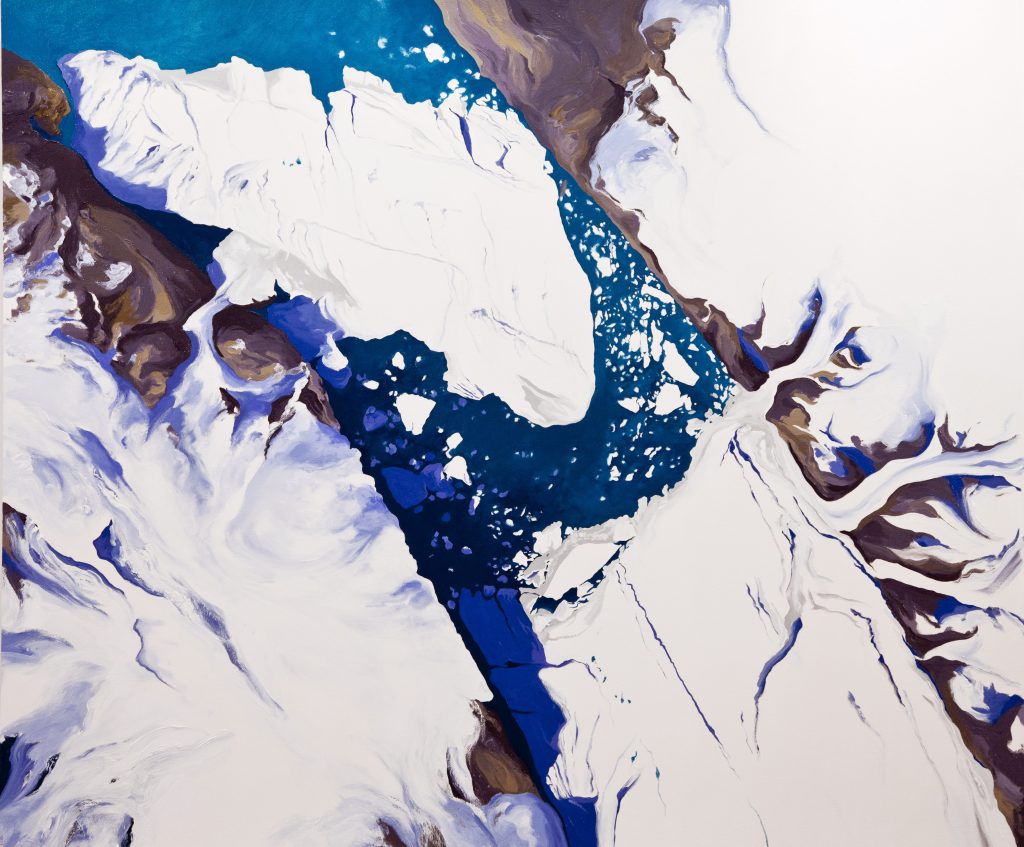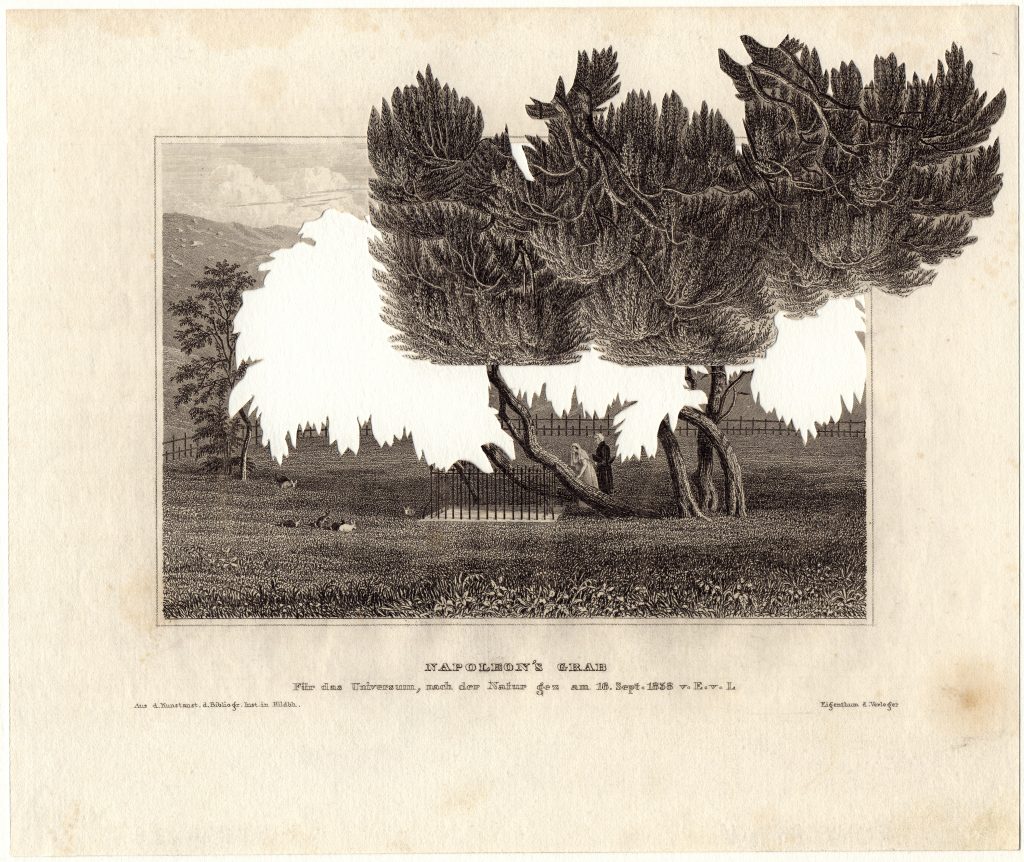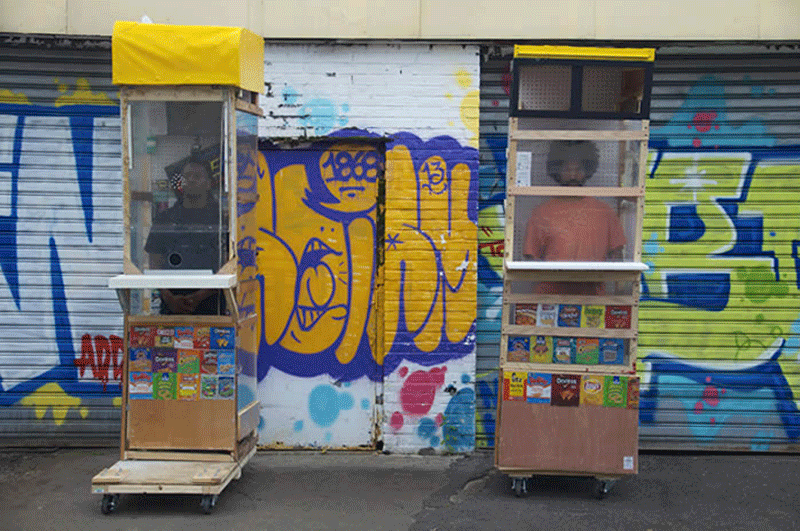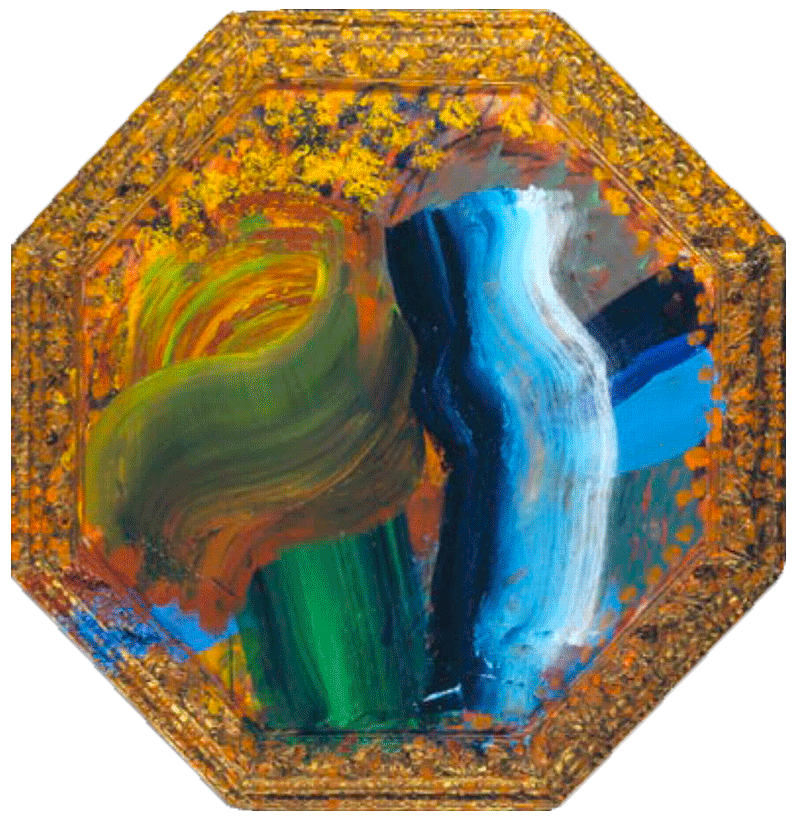 Columbia Glacier Lines of Recession 1980-2005
Columbia Glacier Lines of Recession 1980-2005
Vast and Vanishing
ART, ACTIVISM, AND THE ARCTIC
Diane Burko uses art to examine monumental geological phenomena
GLASSBORO, NJ – Exploring the confluence of arts, science, and activism Rowan University Art Gallery showcases the work of environmental artist Diane Burko in Vast and Vanishing. On display from March 8 – April 21.
Diane Burko’s artistic practice is at the intersection of art, science, and activism focused on climate change. For over a decade, she has been documenting glacial recession in large-scale paintings and photographs developed in collaboration with scientists, studying their research, and utilizing their data. She is especially committed to understanding and incorporating climate science and sees this intersection as crucial to her artistic development. Her activism led her to make research expeditions to the ice fields of Antarctica, Greenland, Patagonia, and Svalbard where she documented and collected data for her work.
By employing many of the methods used by climate scientists such as recession lines, satellite imaging, and repeat photography, Burko’s research, coupled with her experiences, are translated into monumental paintings and photographs. The results are emotionally expansive works that function as a visual record of glacial recession, a call to action, and metaphor for the socio-political discourse on climate change. Curated by Mary Salvante, Vast and Vanishing comprises works that capture the inexhaustible dichotomies and the inescapable tension that Diane witnessed in these extreme frozen environments.
Brooklyn-born. Philadelphia-based Burko focuses her work on monumental geological phenomenon. Since 2006 her practice has been at the intersection of art and science, devoted to the urgent issues of climate change. Her current work reflects expeditions to the three largest ice fields in the world. She has sailed around Svalbard with artists and also spent four days in Ny-Alesund with scientists from the Norwegian Polar Institute. She has visited Greenland’s Ilulissat and Eqi Sermia glaciers and first traveled to the Antarctic Peninsula in 2013, returning in January 2015, and explored the Patagonian ice field of Argentina. Burko’s expeditions can be followed at www.dianeburko.com/
Aside from showing her art, Burko has gained attention from the scientific community, often speaking on how the arts can communicate science. She is an affiliate of INSTAAR, and has participated in numerous conferences such as those hosted by the Geological Society of America and American Geophysical Union. She is committed to public engagement, using both facts and images to make the invisible visual and visceral.
Rowan University Art Gallery is located at 301 High Street West. Free 2-hour public parking is available in the Mick Drive Parking Garage across the street from the gallery. Eynon Ballroom is located in Chamberlain Student Center on the university campus. Admission to the gallery, discussion, and receptions is free and open to the public. Regular gallery hours are Monday – Wednesday, 10:00 a.m. to 5:00 p.m. and Thursday – Saturday, 10:00 a.m. to 7:00 p.m. Directions can be found on the gallery website. For more information, call 856-256-4521 or visit www.rowan.edu/artgallery.
Support for programming at Rowan University Art Galleries is made possible by funds from the New Jersey State Council on the Arts, a partner agency of the National Endowment for the Arts.
Thank you to Mary Salvante for the content of this post.
Like DoNArTNeWs Philadelphia Art News Blog on facebook
Follow DoN on Twitter @DoNNieBeat58
@donniebeat on Instagram
Affiliate Marketing Disclosure Statement
Donate via safe and secure PayPal in the sidebar.








